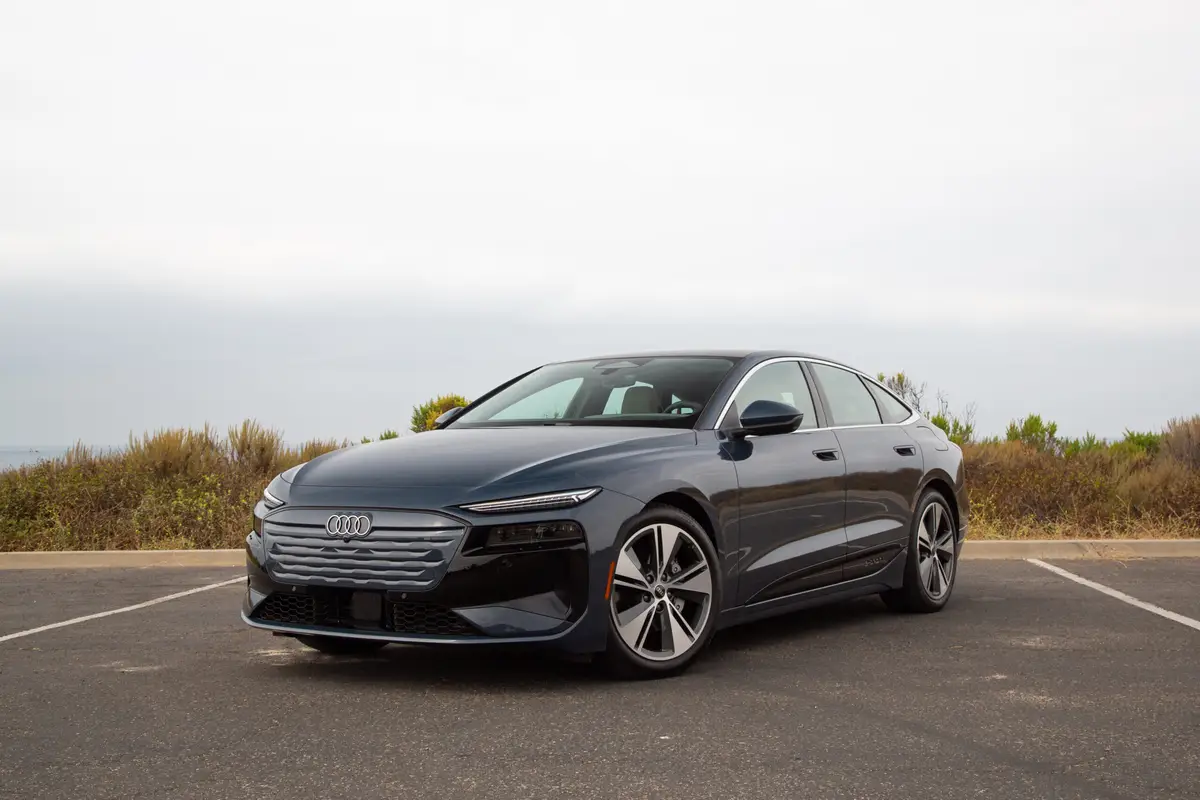2004 Rolls-Royce Phantom VI: What's New
Vehicle Overview
Just days after Rolls-Royce fell under full ownership by the BMW organization, a brand-new model made its global debut at the North American International Auto Show in Detroit. The corporate transition took place on Jan. 1, 2003, and Rolls-Royce was ready to delight Detroit showgoers with the mammoth new Phantom sedan. An hour earlier on the appointed date, this new model was also unveiled at the BMW-financed Rolls-Royce factory near Goodwood, England.
Ranking as the sixth-generation Phantom, the ultra-luxury sedan is powered by a 453-horsepower, 6.75-liter V-12 engine — actually a variant of the 4.5-liter V-8 that goes into BMW’s 7 Series. Aluminum space-frame construction makes the sedan the lightest structure ever used by Rolls-Royce. Though it is still no lightweight at 5,500 pounds, the Phantom can accelerate from zero to 60 mph in 5.7 seconds, according to the all-new Rolls-Royce Motor Cars Limited organization.
Through a century of Rolls-Royce history, “the name of this company has become a byword for excellence,” said Tony Gott, chairman and chief executive officer of Rolls-Royce Motor Cars. The new model is said to combine authentic Rolls-Royce design proportions with modern engineering. “We stand . . . at the renaissance of the marque,” Gott added.
All of the car’s mechanical components, painted body panels and onboard technology are created in Germany under BMW auspices. These items are then sent to southern England for final assembly and personalization of the sedan’s interior.
The vast space allotted for passenger privacy in the backseat, as well as the rear-hinged back doors — often called suicide doors — are reminiscent of coachbuilt Rolls-Royce models of the past. The suicide doors permit easier access to the rear compartment and can be closed at the touch of a button so that occupants need not suffer the indignity of a wet arm if it happens to rain. This is the first car in the world to be fitted with Michelin-developed PAX run-flat tires that can go at least 100 miles uninflated at 50 mph.
Deliveries to dealerships are scheduled to begin in May 2003, and Rolls-Royce anticipates producing about 1,000 Phantoms per year for worldwide sale. Prices begin around $320,000.
Exterior
Like so many Rolls-Royce sedans before it, the new Phantom has a long bonnet (hood) matched by a short front overhang and a long rear overhang. The traditional-style upright grille appears to be one of the largest ever; it is made up of slim vertical bars and has a mattelike finish. Deep-set quad rectangular headlights sit above large round fog lamps. A discreet rear window helps complete the picture, and the gas filler door is above the belt line.
At the touch of a button, the “Spirit of Ecstasy” hood ornament folds down electrically into the body when the Phantom is parked as a means of discouraging theft. Self-leveling air springs are used all around. At 60 mph, the air suspension adjusts settings every 12 inches. Synchronized wheel centers keep the Rolls-Royce badges on all four wheels upright at all times. The car’s dimensions are large. The Phantom measures 229.7 inches long overall, rides a 140.6-inch wheelbase and stretches 78.3 inches wide. Structural highlights include a double-skin floor.
Interior
Lush and generous are the bywords for the Phantom’s five-passenger space in both the front and rear. To aid in safety, privacy and what Gott calls the best possible social environment, the backseat occupants sit well back in lounge-shaped seats alongside the C-pillars rather than next to the doors. Up to 16 hides are needed to fabricate the leather upholstery, which is matched to fine wood veneers. Umbrellas stow in each reverse-opening rear door.
Front and rear park-distance sensors trigger warnings when the Phantom approaches another vehicle while parking. A satellite navigation system is standard. Rear passengers may also enjoy handcrafted folding picnic tables and an optional DVD video system.
Under the Hood
Developed by BMW, the 6.75-liter V-12 engine generates 453 hp at 5,350 rpm and 531 pounds-feet of torque — 75 percent of which is available from 1,000 rpm. The six-speed-automatic transmission uses shift-by-wire technology.
Safety
Door-mounted side-impact airbags are installed for the front seats, and full-size curtain-type airbags protect all passengers.
Featured stories




